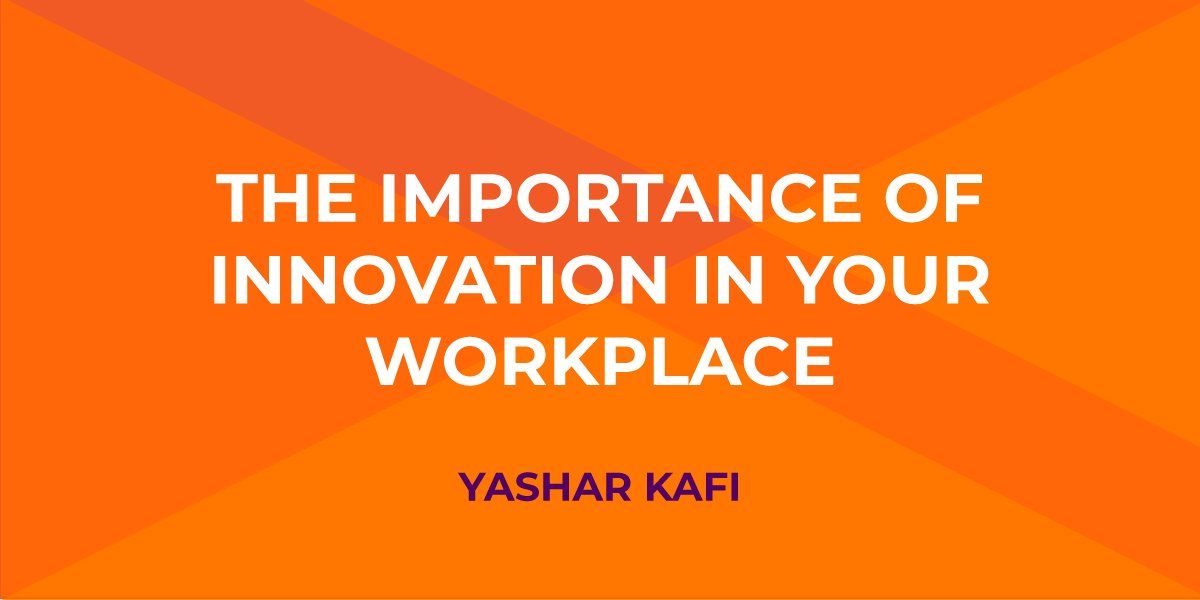The Importance of Innovation In Your Workplace
“Innovation” has pretty much become synonymous with “great workplace” in recent times. The buzzword is so popular that over the years, people have referred to it as today’s equivalent of the Holy Grail; it’s the panacea—“management’s equivalent to motherhood and apple pie”—and you’d be silly to question or challenge its significance.
But what does it mean?
For many people, myself included, innovation is all about finding a problem and creating a solution out of the blue—hopefully leading to some sort of excellent development or discovery, and subsequent achievement.
What Is Innovation?
There’s more to it than that, though, of course. If you didn’t know, innovation comes from the Latin word “Novus,” which means “new.” However, on a day-to-day basis, we don’t necessarily use the word “innovation” to represent something new. The term has evolved to be inclusive of the process of discovery and uncovering new ways to do things.
I think the honest definition sits somewhere in the middle of the playing field.
In the workplace, innovation is the action of transforming existing business models, products, and services provided by an organization to ensure that user experience is the best that it can be and make sure that customers come back again. Something I’ve noticed, however, is that the terms “creation” and “innovation” get used interchangeably in some workplaces, and in some online journals—I’d like to quickly address this.
If you take a look at Merriam-Webster, specifically at the definition of “creation,” you’ll find that it means “to have the quality or power to create, [and the] act of making, inventing or producing.”
Whereas, “innovation” is defined as “the introduction of something new or different. The act of innovating leads to the introduction of new ideas, devices, or methods.”
What Does That Mean For Innovation?
If you compare and contrast the two terms, it’s the combination of creativity and work that results in eventual innovation. You need to harness your creative ability and potential to be an innovative member of the team.
Why Is Innovation So Important?
Do you know what happens when a company stops innovating in the business world? It very quickly loses its place in an over-saturated, ultra-competitive market. Imagine that your business is at the very top of the AI and Machine Learning marketplace; you’ve been the industry-leading stalwart for as long as anybody can remember, providing products and services that offer solutions to users’ issues in software. Suddenly, your company stops producing updates for existing software and ceases the development of upcoming products and services.
As soon as your company ceases innovating new solutions and supporting previously released ones, the organizations that you’ve competed with since the dawn of time will be right there, prepared to innovate and provide the solution that you should have brought to the marketplace. At that point, your once-faithful customers will jump ship, heading off to your competition, and subsequently, your sales will suffer. You’ll quickly find that your market share is dropping, and your once-heralded business will be knocked from its mighty pedestal and replaced by another.
Every organization must recognize the importance of innovation as we move forward, into a post-COVID-19 world, where demanding consumers require new methods for traditional means. It is the companies that realize their innovative potential that will continue to surge ahead of the competition. That success can only be seen if the leadership within a business breeds a culture of creation and innovation, to ensure that they provide for the entire nation.




